No More Monkey Business
I've learned something unexpected down here in Antarctica. I've helped students conduct labs now for years. The whole point of our labs is to learn how to conduct investigations-how to ask testable questions, set up protocols and think critically about their results. Students are expected to make mistakes and learn from them. This morning, Andrew, our awesome grad student, showed me the protocol for the testing that I will be helping with starting tomorrow. It really struck me the difference in what we are doing compared to classroom work. In coming here, my main objective was to show my students what real science is like. I had the assumption that I kind of already knew. That couldn't be farther from the truth. See, the stakes for this work are so much higher for these experiments. Mistakes are not OK. The consequences of messing up are catastrophic when you consider the amount of time, effort and money that it takes to put scientists in the field down here. The National Science Foundation invests millions in Antarctic field studies each year. In addition, the scientists put a lot of pressure on themselves to ensure the accuracy and integrity of their data. It is not only their reputation, their years of hard work, but their possibility for future funding that is on the line. Forget to write down something, mix up the labels, or ignore the timer, and you could be throwing it all away. Mistakes can still happen, so the scientists do everything in their power to practice and minimize human error. This is important work, and it's important to get it right. As my husband would say, it's time for, "No more monkey business."
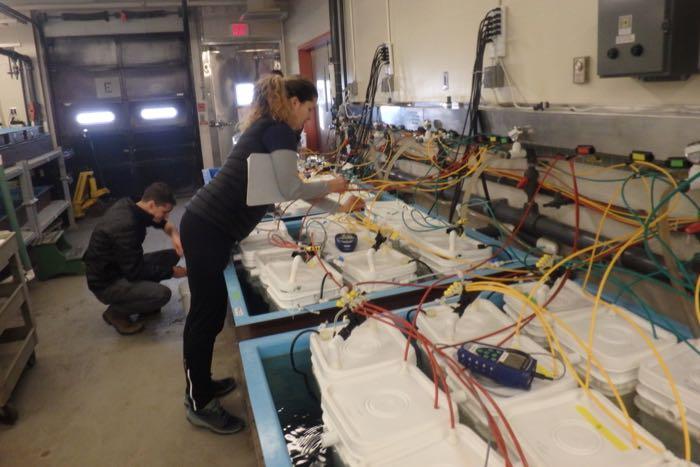 Milica and Andrew testing the water
Milica and Andrew testing the water
Experiment Results...and the fresh water first wins!
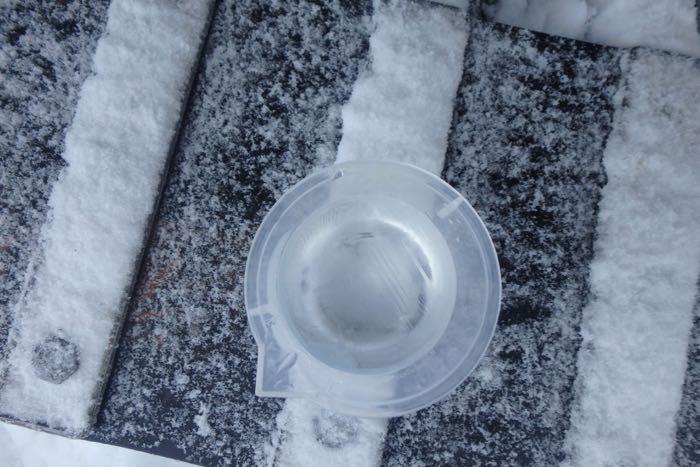 Fresh Water after 18 minutes- Ice begins forming
Fresh Water after 18 minutes- Ice begins forming
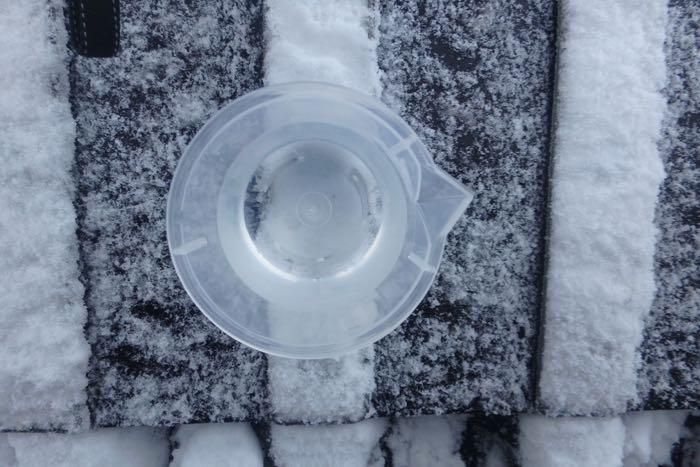 Sea Water after 18 Minutes- no ice yet!
Sea Water after 18 Minutes- no ice yet!
Yes, as you can see, the fresh water definitely started freezing first. It was about ten minutes ahead of the seawater. The fresh water had crystals at 18 minutes, while the first ice appeared in the sea water around minute 29. I thought it was quite fast with the air temperature around 12 degrees F.
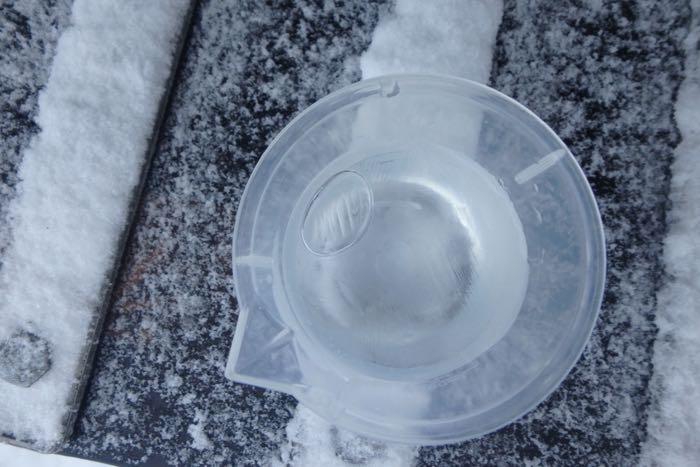 Fresh Water after 30 minutes- Freezing but clear
Fresh Water after 30 minutes- Freezing but clear
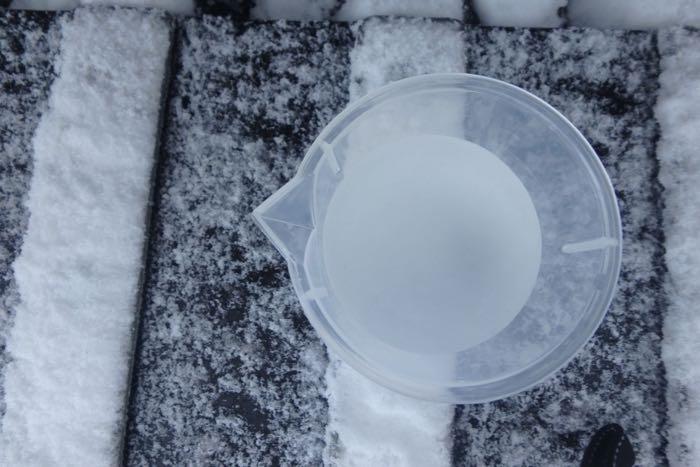 Sea Water after 30 Minutes- very slushy
Sea Water after 30 Minutes- very slushy
So...the big question is WHY did the fresh water freeze faster? Sea water is not pure H2O. It has many dissolved solids, salt being the most obvious. Whenever you add solutes(the salt) to a solvent(the water) , it lowers its freezing point. This is why people sprinkle salt of some kind on roads and driveways when the temperature is below 32 F. It lowers the freezing point and keeps the water liquid, instead of ice.
Something interesting happened that I didn't consider though. The crystallization of each was very different. The fresh water formed in solid layers- very sharp and mostly at the edges. The center stayed liquid for a while. The sea water, on the other hand, formed smaller crystals with a kind of slushy consistency. It was more like a Slurpee. Both containers were almost solid by he time we had to pack up- after about two hours.
Shout Out
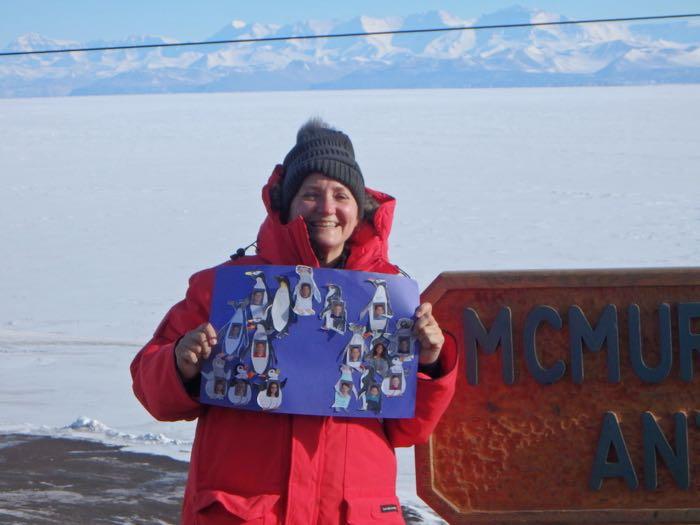 The San Antonio 7th Grade Class Penguins
The San Antonio 7th Grade Class Penguins
Hi there San Antonio 7th Graders! I miss you guys, but Antarctica is amazing. Wait until you see all the pictures I have to bring back. I've got a lot of ideas now for more experiments that we could do now! Do you have any questions or ideas for experiments that I could run while I'm down here?
Tomorrow!
Tomorrow is day zero. Tomorrow, we run the first set of experiments. I feel so fortunate to have a chance to be part of the science taking place at the bottom of the world!
Stay Cool,


Comments
Add new comment